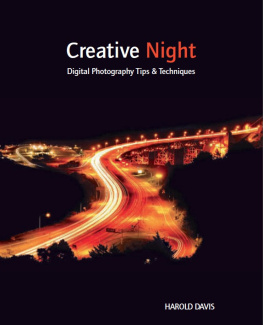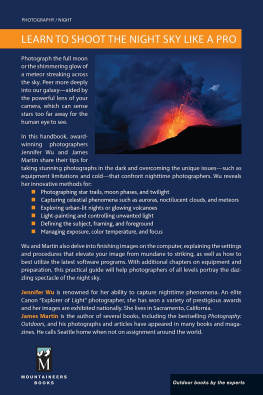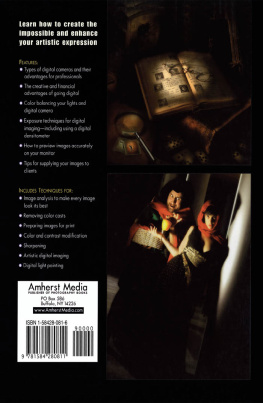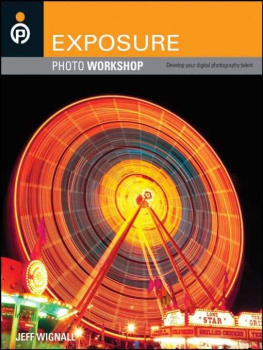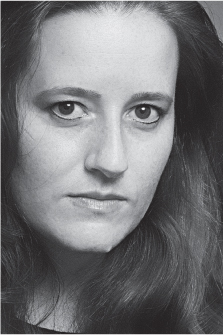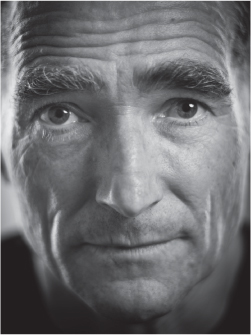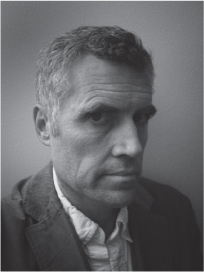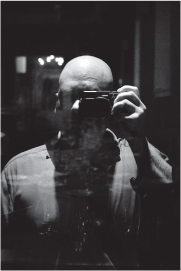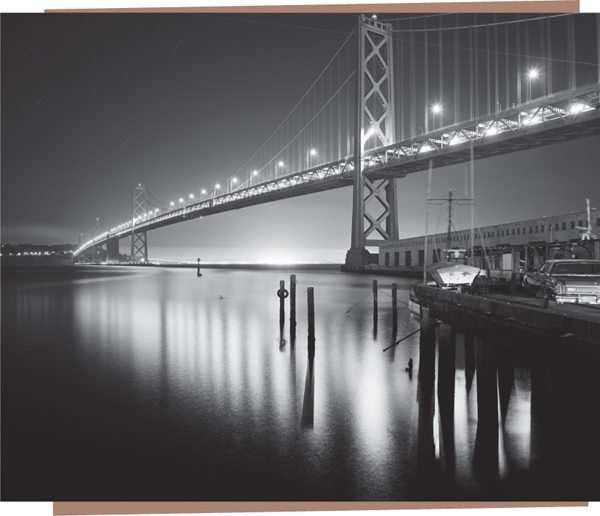Digital Capture After Dark
Digital Capture
After Dark
Amanda Quintenz-Fiedler
Philipp Scholz Rittermann
Amanda Quintenz-Fiedler, Philipp Scholz Rittermann
Editor: Joan Dixon
Copyeditor: Aimee Baldridge
Layout: Petra Strauch
Cover Design: Helmut Kraus, www.exclam.de
Printer: Tara TPS through Four Colour Print Group, Louisville, Kentucky
Printed in Korea
ISBN 978-1-933952-66-6
1st Edition 2013
2013 Amanda Quintenz-Fiedler, Philipp Scholz Rittermann
Rocky Nook, Inc.
802 E. Cota Street, 3rd Floor
Santa Barbara, CA 93103
www.rockynook.com
Library of Congress Cataloging-in-Publication Data
Quintenz-Fiedler, Amanda.
Digital capture after dark / Amanda Quintenz-Fiedler, Philipp Scholz Rittermann.
-- 1st edition.
pages cm
ISBN 978-1-933952-66-6 (pbk.)
1. Night photography. 2. Photography--Digital techniques. I. Rittermann, Philipp
Scholz. II. Title.
TR610.Q56 2012
778.719--dc23
2012026409
Distributed by OReilly Media
1005 Gravenstein Highway North
Sebastopol, CA 95472
All product names and services identified throughout this book are trademarks or registered trademarks of their respective companies. They are used throughout this book in editorial fashion only. No such uses, or the use of any trade name, are intended to convey endorsement or other affiliation with the book. No part of the material protected by this copyright notice may be reproduced or utilized in any form, electronic or mechanical, including photocopying, recording, or by any information storage and retrieval system, without written permission of the copyright owner. While reasonable care has been exercised in the preparation of this book, the publisher and authors assume no responsibility for errors or omissions, or for damages resulting from the use of the information contained herein.
This book is printed on acid-free paper.
Authors
Amanda Quintenz-Fiedler is a writer, photographer, and educator. She is a regular contributor to such publications as Rangefinder, Digital Photo Pro, and Photographers Forum. She is the author of Ten Photo Assignments and co-author of Capture: Digital Photography Essentials, both published by Rocky Nook. She has shown her photographs at group exhibitions around the country and continues to create work in both digital and analog media, focusing on concepts such as modern attitudes, personal demons, and stunted dreams.
Quintenz-Fiedler teaches in several colleges in the San Diego area, holds workshops, and lectures on the arts of photography and writing. She lives in Carlsbad, CA with her beloved husband, Steve, and cherished son, Connor. Her photographic work can be viewed at amanda-quintenz.com
Philipp Scholz Rittermanns work spans opposite ends of our environment, from nocturnal scenes of industry to views of pristine landscape. His work is held in over one hundred public, private, and corporate collections, including MoMA, New York, and the Bibliotheque Nationale in Paris, France. Scholz Rittermann exhibits in national and international venues, and was honored with a mid-career survey at the Museum of Photographic Arts in San Diego, which published the monograph Navigating by Light. He has been teaching photography for over thirty years in the U.S. and abroad.
In 2011, the Museum of Contemporary Art San Diego exhibited large-scale photographs from Emperors River, a new multi-year project he has been conducting in China.
Scholz Rittermann is represented by Scott Nichols Gallery, San Francisco, CA, and can be contacted at
Contributors
Kevin McCollister was raised in Cleveland, Ohio, and worked for several years as a deckhand on the Mississippi River. He later lived in Boston, Massachusetts where he studied film and drama at Harvard Extension. Employed by the Writers Guild of America, he has lived in Los Angeles for more than two decades. McCollisters book of photographs, East of West LA, is available through IFSF publishing, and his continuing work can be viewed at eastofwestla.com
Michael Penn is a self-taught photographer who focuses his lens on Philadelphia and New York City. Preferring to photograph at night, he feels the senses come alive when the sun goes down. Using compact cameras, he can go undetected when capturing the city streets. His work can be viewed at michaelpennphotography.com
Bay Bridge , San Francisco, California Philipp Scholz Rittermann
Foreword by
Philipp Scholz Rittermann
THE WORLD IS DIFFERENT AT NIGHT, and so is our mental state. For the most, part our circadian rhythms direct us to be busy during the day and to rest at night. But throughout history, many artists, writers, and composers created some of their most profoundly moving works at night. Perhaps this is possible because the pressures and distractions of the day fade with the setting sun, allowing the mind free rein to wander, to imagine, and to see things differently.
This altered state of mind is what makes exploring nocturnal surroundings so interesting. On an instinctive level, leaving illuminated surroundings and stepping into a world of shadows takes us out of our comfort zone. Everything looks different at night. Our imagination kicks in, filling in what we cant see, making up scenarios, and anticipating what might be out there, just beyond the recognizable.
In my early 20s, I saw a film called The Third Man, a film noir classic. The dramatic shadows of people that were cast on walls, the edges of lit faces, and the silhouettes of shadowy figures lurking in the background fascinated me. At the time, I was living in northern Germany. It was winter, the days were short and gray, and the outside world looked oppressively dull and murky. But at night things changed. Industrial areas and everyday neighborhood streets, which I hardly noticed during the day, suddenly looked dramatic, like the sets in a noir movie. Bridges with lights ablaze, arcing over deep shadows; reflections of railway tracks or water glistening beneath them; backlit silhouettes of bare trees; smoke stacks and steam ventsall became irresistible subjects for me. Nighttime made a wealth of mysterious stuff appear practically right outside my door. The same dull surroundings I had dismissed as having no visual interest during the day transformed into an arena of great visual promise at night.
As I started photographing, I also began looking at the night photographs of Brassa, Andreas Feininger, George Tice, and others, and realized there was a plethora of nocturnal imagery out there. It was exciting to realize that there were indeed others who thought photographing at night was a worthwhile pursuit! So began an enduring nocturnal exploration which has led me through natural, urban, and industrial landscapes, using long exposures, experimenting with movement, and painting with light.


